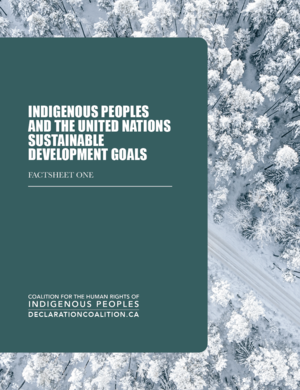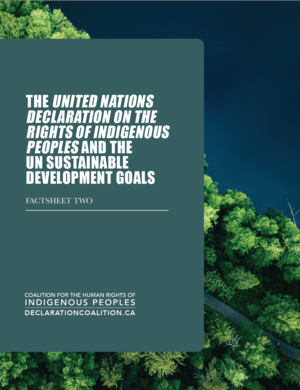>> Implementing the UN Declaration on the Rights of Indigenous Peoples: Myths and Misrepresentations English / Français
>> Free, Prior and Informed Consent answers common questions you might have about FPIC
>> Interpreting the UN Declaration on the Rights of Indigenous Peoples
Fact sheet
- The Declaration was adopted by a vote of the overwhelming majority of the UN General Assembly.
- The only four states that voted against the Declaration have all reversed their positions and endorsed the Declaration.
- The Declaration affirms collective rights of Indigenous Nations or Peoples and the individual rights of Indigenous persons.
- All rights in the Declaration are inherent: governments cannot give or take away these rights.
- All governments have a responsibility to respect, protect and fulfill these rights.
- The Declaration builds on decades of expert interpretation of existing international human rights laws and standards. It does not create new rights.
- International human rights declarations have diverse legal effects.
- Canadian courts and Tribunals have already applied the Declaration in the interpretation of Canadian law.
- Indigenous Peoples’ representatives worked for more than two decades to achieve the Declaration. It is the first international instrument where the rights holders themselves participated equally with states in the drafting.
- The Declaration constitutes a principled framework for justice, reconciliation, healing and peace.

